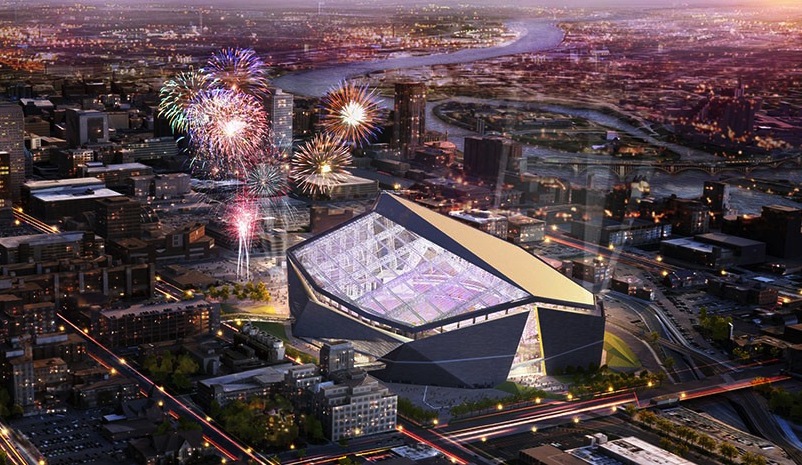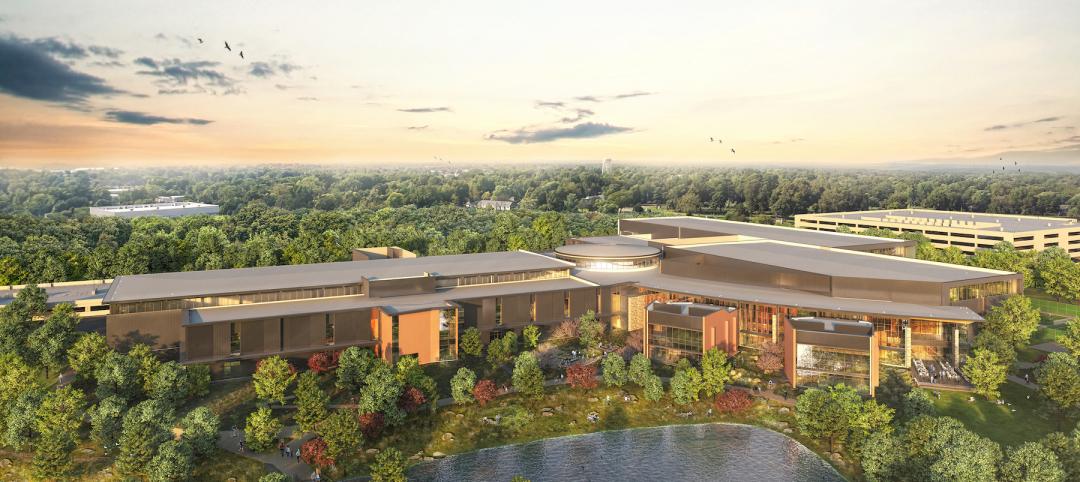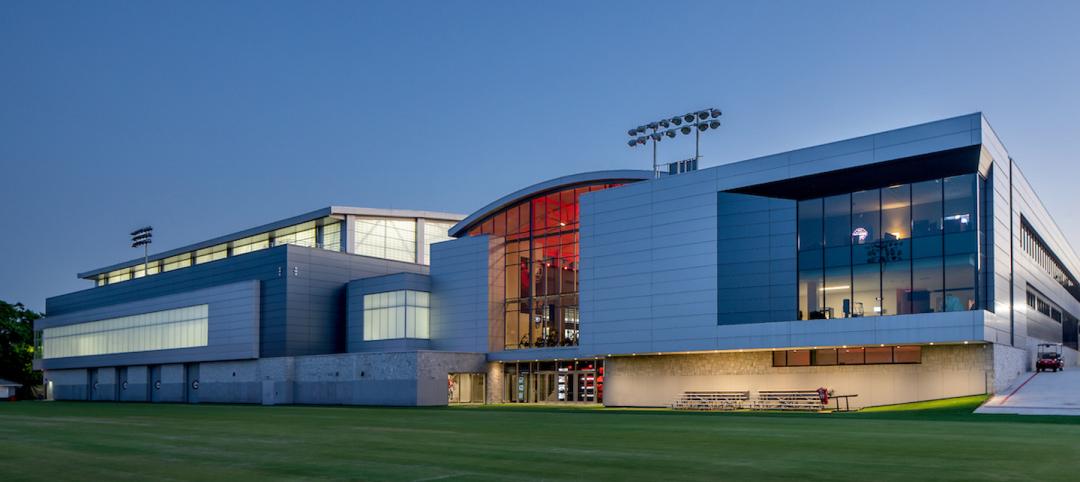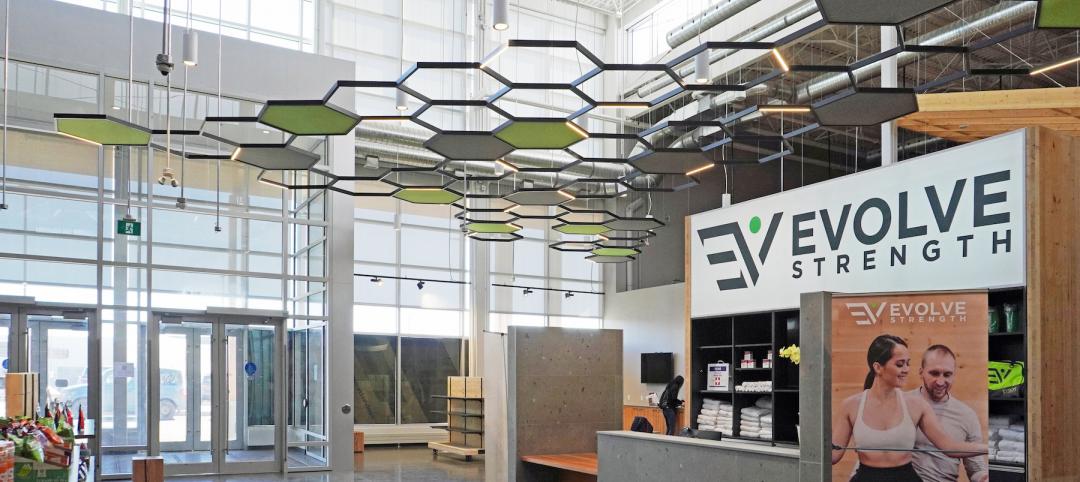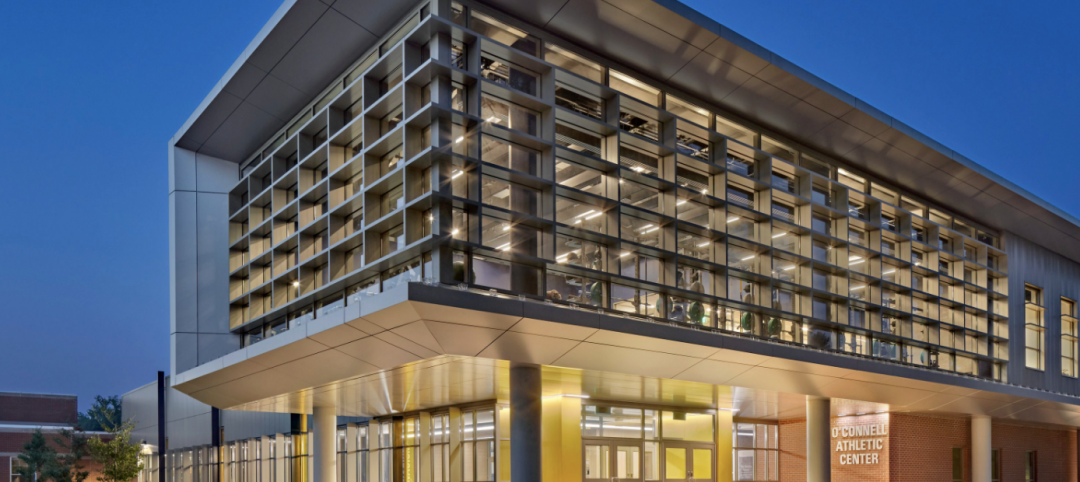The NFL’s Minnesota Vikings franchise is aware what a heavy accumulation of snow can do. Late in the 2010 season, the Twin Cities were hit by a blizzard, and 17 inches of snow came to rest on the Metrodome’s air-supported Teflon and fiberglass roof. All the weight and moisture caused the roof to puncture and collapse. The stadium was repaired the next summer for $22.7 million.
For the team’s new stadium, which was designed by HKS Architects and is set to open next fall, the team is ensuring that the roof will hold up to rough northern conditions. U.S. Bank Stadium will have an ETFE (ethylene tetrafluoroethylene) pneumatic roof, a durable, flexible material made of a polymer similar to Teflon, as the Minneapolis Star-Tribune reports. ETFE is 1/100th the weight of glass and can stretch three times its length without losing elasticity.
The ETFE pillows are still supported by air, but they are also backed by a steel structure and won’t sink due to a loss of air pressure. The panels can be punctured by sharp objects but are easy to patch, and the nonstick surface and steep angle will help prevent snow from piling high.
ETFE also is lightweight and translucent, allowing natural light to enter for a sense of openness. Domed stadiums of the past, like the Metrodome, were known for being dark and cavernous.
Roughly 248,000 sf of the roof will be composed of ETFE; the remaining portion will be a steeply-pitched hard roof, but sunlight will still angle over the entire field. According to the Vikings’ website, ETFE will not degrade when exposed to UV light. Altogether, U.S. Bank Stadium will cost just more than $1 billion to build.
ETFE has previously been installed at venues like the Beijing National Stadium in China, the Eden Project in Cornwall, U.K., and Allianz Arena in Munich.
Related Stories
Multifamily Housing | Aug 3, 2022
7 tips for designing fitness studios in multifamily housing developments
Cortland’s Karl Smith, aka “Dr Fitness,” offers advice on how to design and operate new and renovated gyms in apartment communities.
Reconstruction & Renovation | Aug 3, 2022
Chicago proposes three options for Soldier Field renovation including domed stadium
The City of Chicago recently announced design concepts for renovations to Soldier Field, the home of the NFL’s Chicago Bears.
Headquarters | Jun 21, 2022
Walmart combines fitness and wellness in associates’ center that’s part of its new Home Office plan
Duda | Paine’s design leads visitors on a “journey.”
Sports and Recreational Facilities | Jun 17, 2022
U. of Georgia football facility expansion provides three floors for high-performance training
A major expansion of the University of Georgia’s football training facility has been completed.
Building Team | Jun 14, 2022
Thinking beyond the stadium: the future of district development
Traditional sports and entertainment venues are fading as teams and entertainment entities strive to move toward more diversified entertainment districts.
Acoustic Panels | Jun 9, 2022
A fitness center renovation in Calgary focuses on tamping the building’s sound and vibration
Bold Interior Design chose as its solution a lighting/acoustical panel combination.
Sports and Recreational Facilities | May 26, 2022
WNBA practice facility will offer training opportunities for female athletes and youth
The Seattle Storm’s Center for Basketball Performance will feature amenities for community youth, including basketball courts, a nutrition center, and strength and conditioning training spaces.
Sports and Recreational Facilities | May 19, 2022
Northern Arizona University opens a new training center for its student athletes
In Flagstaff, Ariz. Northern Arizona University (NAU) has opened its new Student-Athlete High Performance Center.
University Buildings | May 9, 2022
An athletic center accentuates a college’s transformation
Modern design and a student health center distinguish the new addition at The University of Saint Joseph in Connecticut.
Sponsored | BD+C University Course | May 3, 2022
For glass openings, how big is too big?
Advances in glazing materials and glass building systems offer a seemingly unlimited horizon for not only glass performance, but also for the size and extent of these light, transparent forms. Both for enclosures and for indoor environments, novel products and assemblies allow for more glass and less opaque structure—often in places that previously limited their use.


